"Seven hundred" Ideapad - review gaming laptop Y-series
In one very similar to our galaxy, people very similar to us also loved to play computer games. In principle, the technologies they developed along roughly the same pattern as ours - they also played Digger, Karatek and Prince on CGA monitors, they too were delighted with Doom and Wolf 3D, they also sat at UFO and Diablo at night , endlessly fulfilled tasks in GTA, rejoiced at the success in Starcraft and waited for the release of Half Life 3.
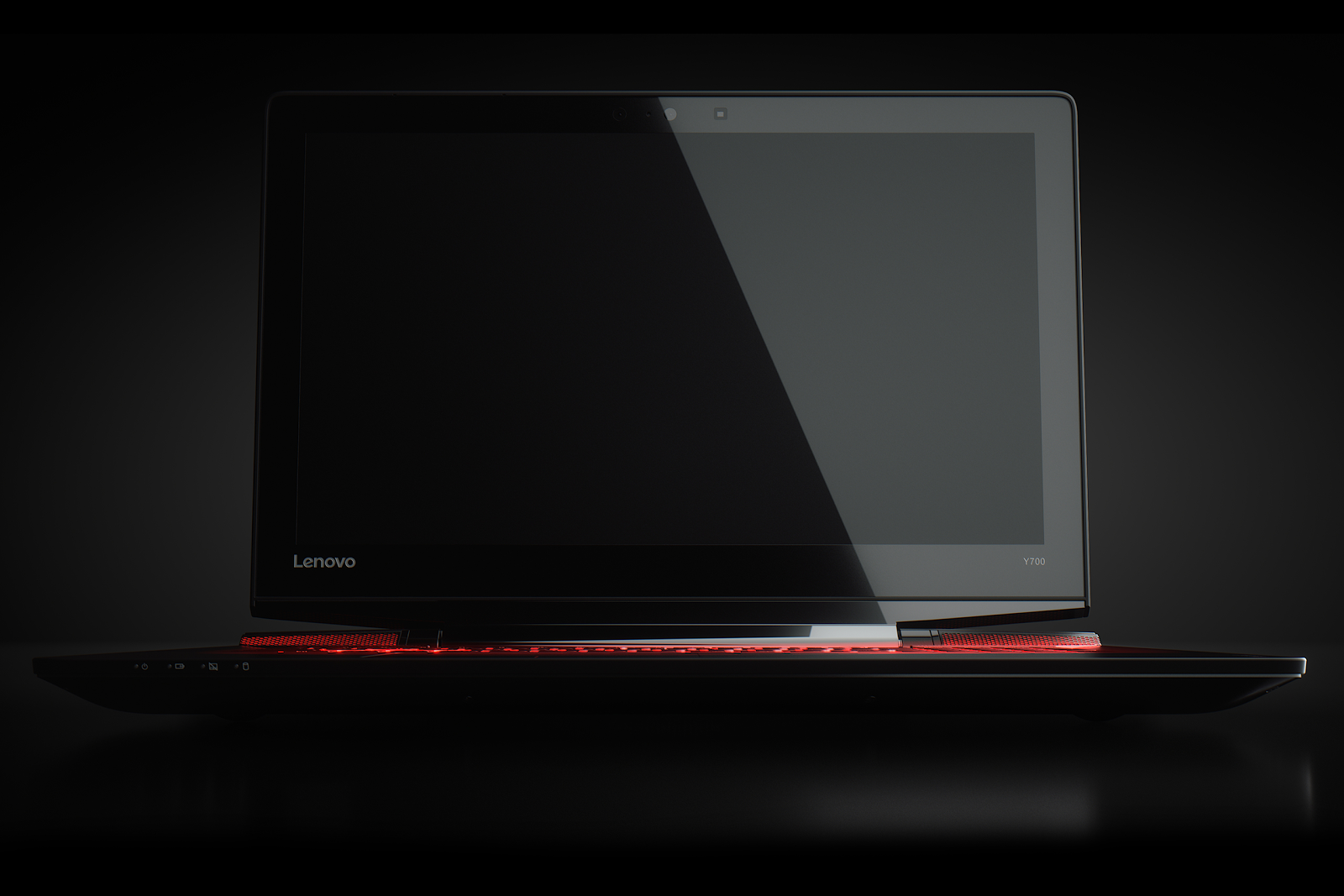
But there was one difference that, it seems to us, radically distinguishes this civilization from ours - they were deprived of gaming laptops! We do not know why this happened, but their scientists, who were very similar to ours, for some reason could not invent such a device. Either they could not make the video cards mobile, or they could not solve the problem of overheating, we don’t know. So they sit, probably, still on bulky desktops, tied to a power outlet ... At the time, like you and I, friends, we are already using this wonderful invention. Guess what we want to talk about today?
A small lyrical digression. You can’t just start talking about gaming laptops without mentioning about laptops “in general”, as they are, in some way, their “ancestors”.
')
Refer to Wikipedia for information:
Yes, a glorious way half a century long. As for the "gaming" laptops, their historical path is not so long. But the future, whatever one may say, is still behind mobile devices that give the user freedom of action and movement and do not require wired connections. And, of course, on the front of gaming devices, this principle is just as important! Today we just want to consider one of the representatives of the line of gaming laptops - we got the Lenovo IdeaPad Y700 and want to “touch” it.

Yes, this is not the top model in the line of Lenovo gaming laptops, let's say - from the whole model range it is more accessible, but if you are interested in more abruptly, then you can get acquainted with the entire line by the link .
Let's start with a visual inspection. The device is delivered in a cardboard box, nothing remarkable, standard packaging made of good cardboard. Inside we are met by black color: foam rubber, accessories packaging, cellophane - all are strictly black. The laptop itself, to be honest, is not small. Dimensions “my honor”: 42x30x27.9 cm and weight 3.5 kg. To call such a device a mobile device with a stretch, but when you understand what the "beast is hiding under the hood," all these reservations recede into the background. And still contributes to such dimensions 17-inch Full HD display, with a matrix made by technology IPS with anti-reflective coating. The solid size allowed to install solid iron! But we will not run ahead, first consider the laptop from all sides and get acquainted with the input-output ports and interesting engineering "discoveries".
A closed laptop on the back looks like the hood of an expensive caddy. It seems that now Bi-Xenon headlights will flash, a roar of a diesel turbo engine will be heard from under the grille and you will rush along the highway towards the night!


What, unfortunately, can not be said about the front view. The usual front view, no more.
The body (aka topcase) of the device is cold, dull, but not metal. Fingerprints remain, if this is important to you, but it is well erased, which will somehow sweeten the pill.
But the bottom panel is metal, not plastic, as it may seem during a quick inspection, despite the fact that the design on it is exactly the same as on the top. On it (the panel) there is an air intake window, with a grille and dust filter inside, as well as a 3W subwoofer in the center.

Now about the area and the use of storage space. The main thing - her, this area a lot. For example, the keyboard climbed with a number pad and full-sized arrow keys. But all the same, when you open the laptop, at first you lose a little. In the upper corners, right and left, there are 2-watt JBL speakers supporting Dolby Home Theater technology. Here, of course, the collaboration between Lenovo and JBL has borne fruit - the sound of the Y700 is quite pleasant. A bit lacking bass, but this is a laptop, not a studio audio system!

On the left side of the notebook are: proprietary power port, USB 2.0, SD / MMC card reader, 3.5 audio jack, Lenovo Recovery hole.

On the right: Kensington lock, RJ-45 network port, HDMI, two USB 3.0 ports

It is time to turn on the ignition and look at the specifications. Our specimen has the following performance characteristics:
Pro performance better words tell brothers tests. To begin with a couple of pictures with the characteristics of the hardware of the laptop.
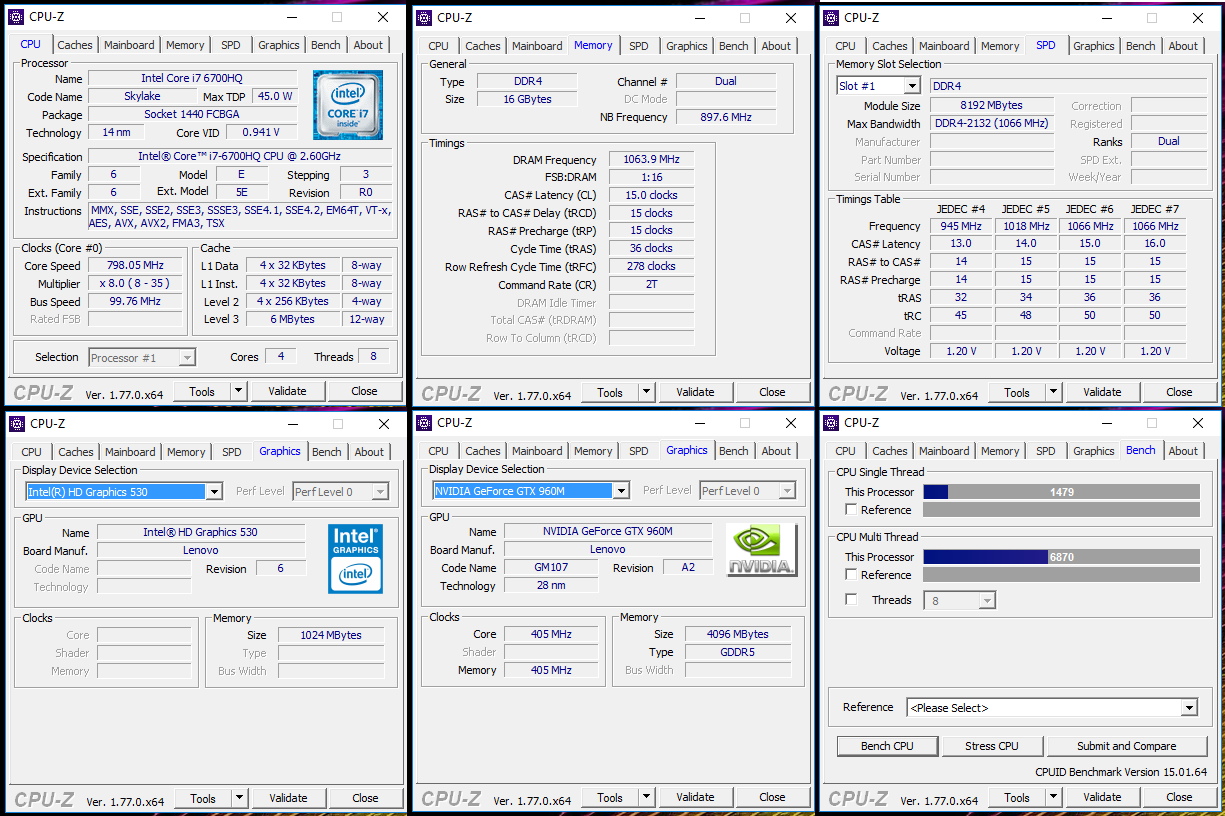
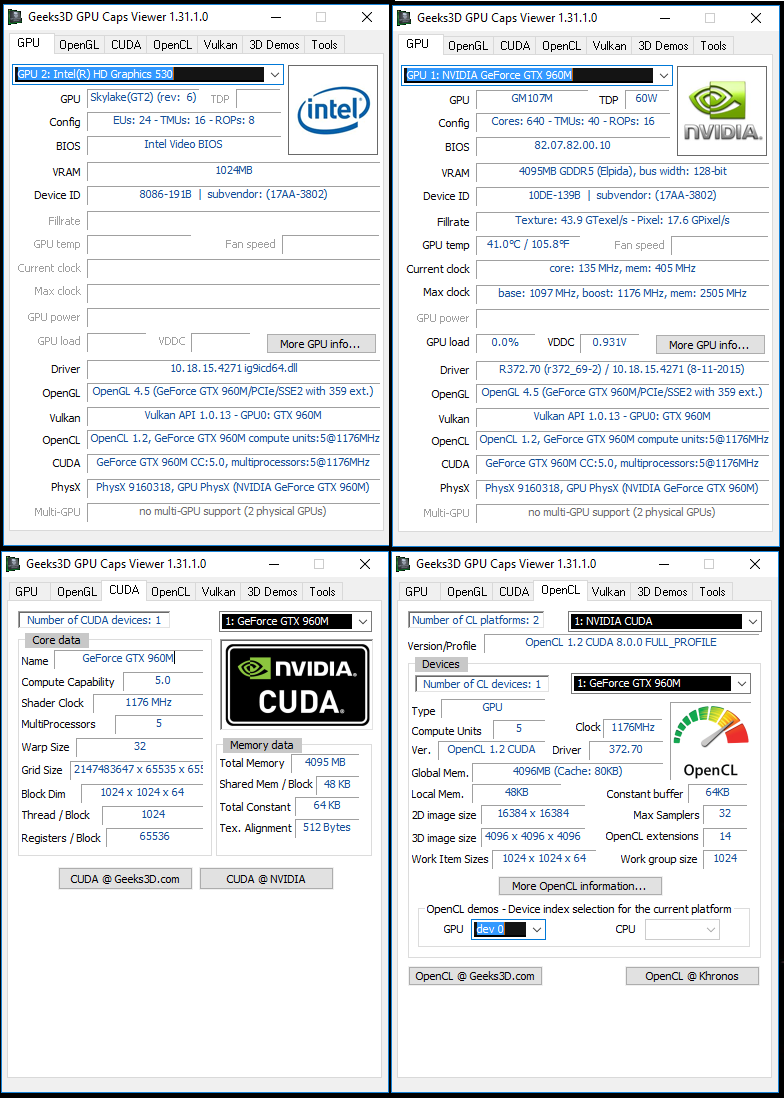
The performance of the disk subsystem was estimated using the popular package CrystalDiskMark. Recall that the disk here is 2: agile SSD at 120 Gb and spacious, with a capacity of 1 Tb, the traditional HDD.
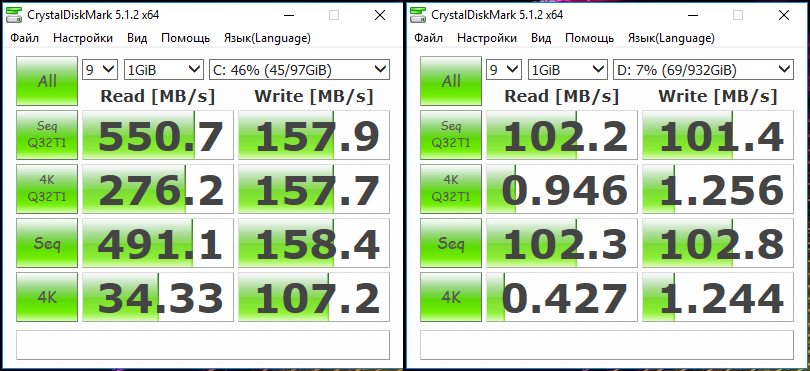
The speed of packing / unpacking the archive in 7-zip.

With the ComputeMark benchmark, let's take a look at the overall GPU computing performance. This test is based on the automatic execution of several computational scripts that run through the API DirectX 11 Compute.

To study the performance of the construction of three-dimensional models, design and animation, we use the specially designed for this purpose test CINEBENCH.
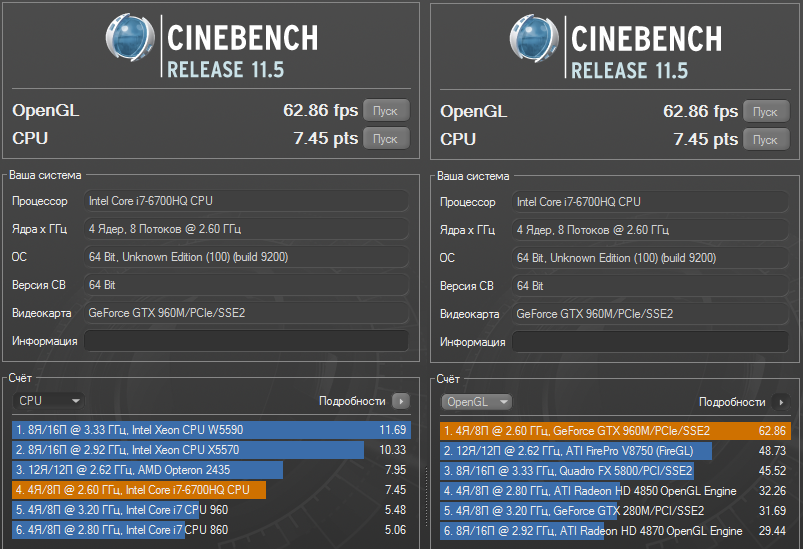
To conduct stress testing of the video card and test the computer cooling system at maximum heat output, we use the Heaven benchmark with the Basic and Extreme settings.

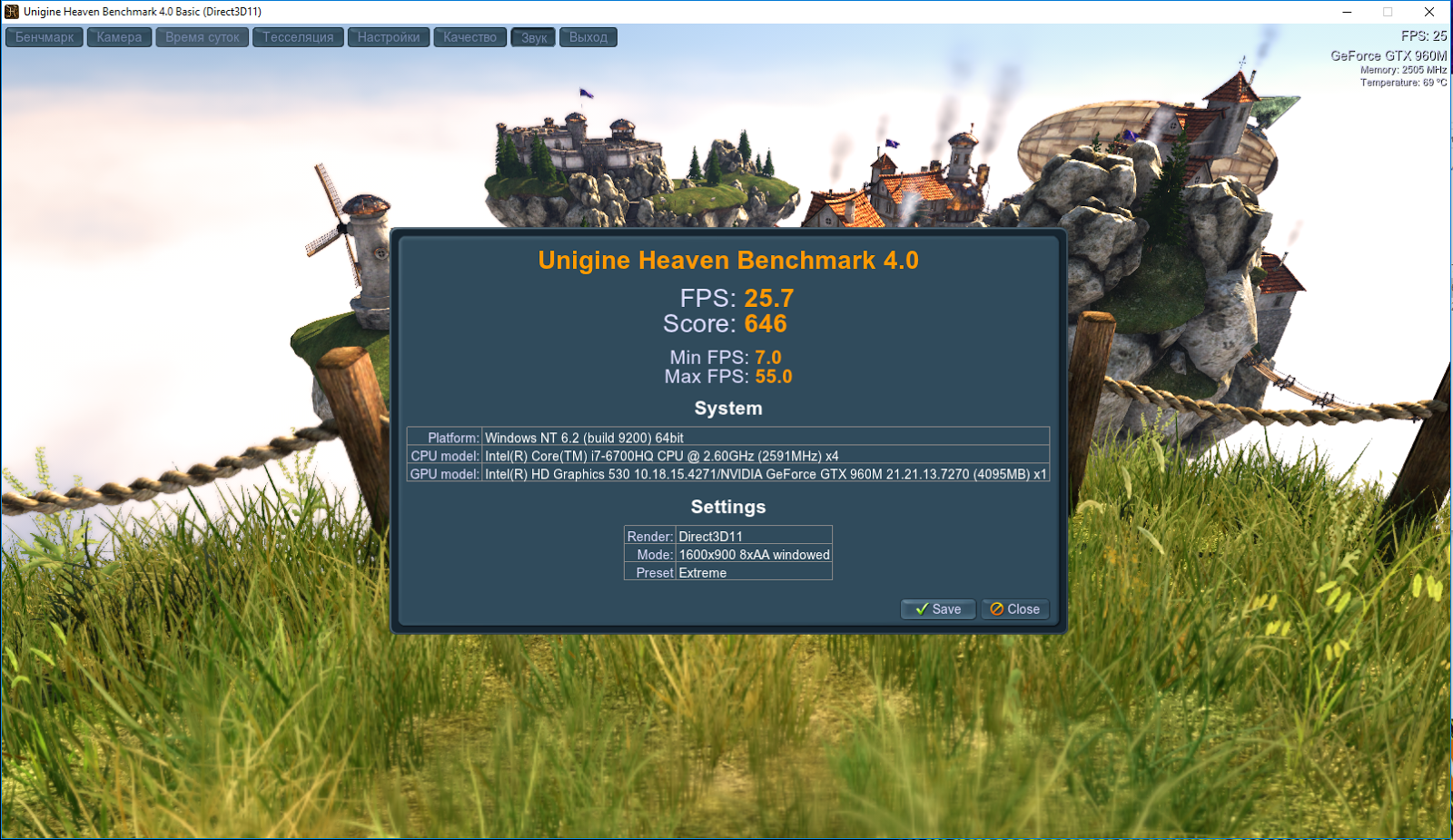
Well, where do without 3DMark :)
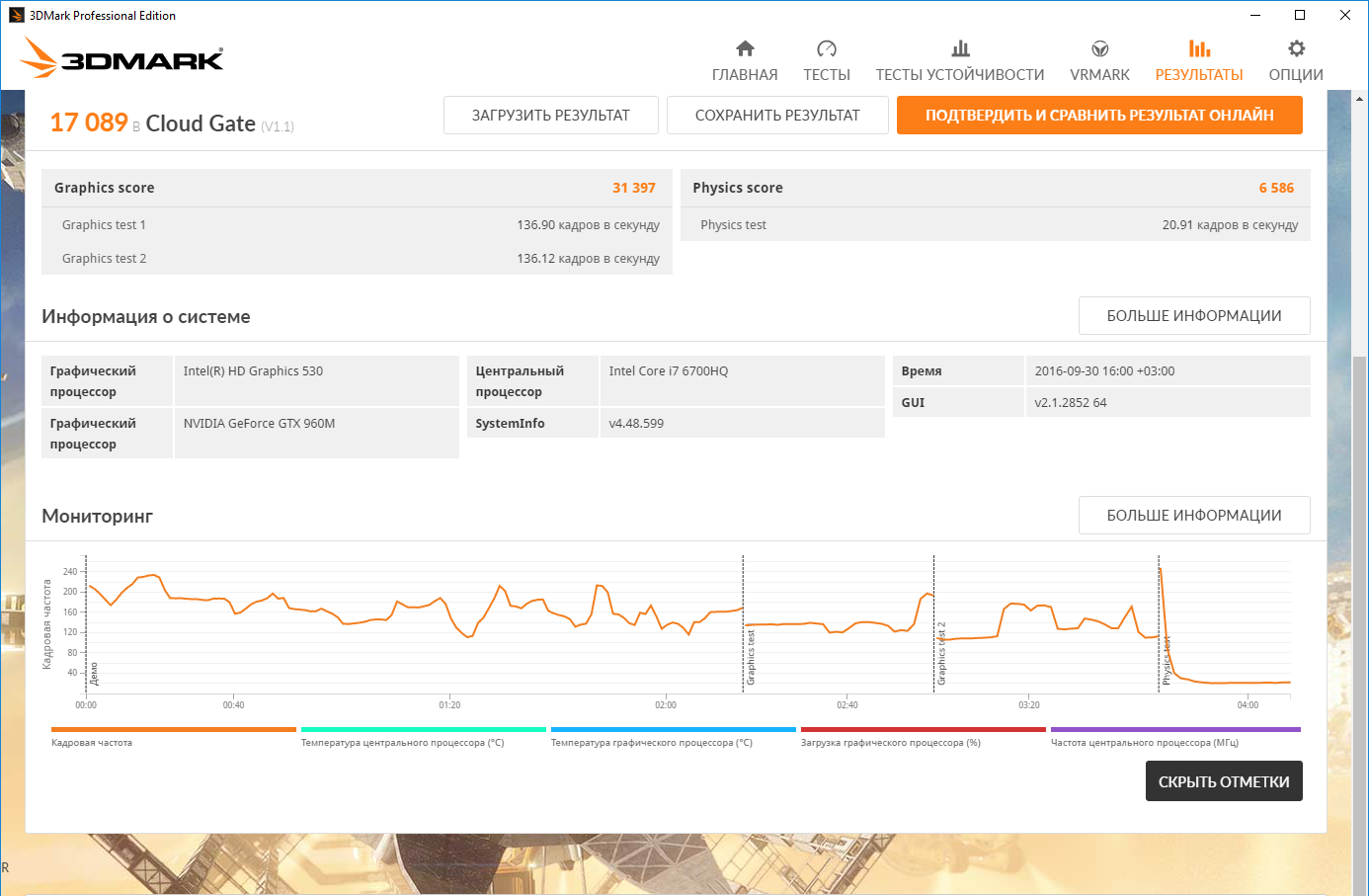
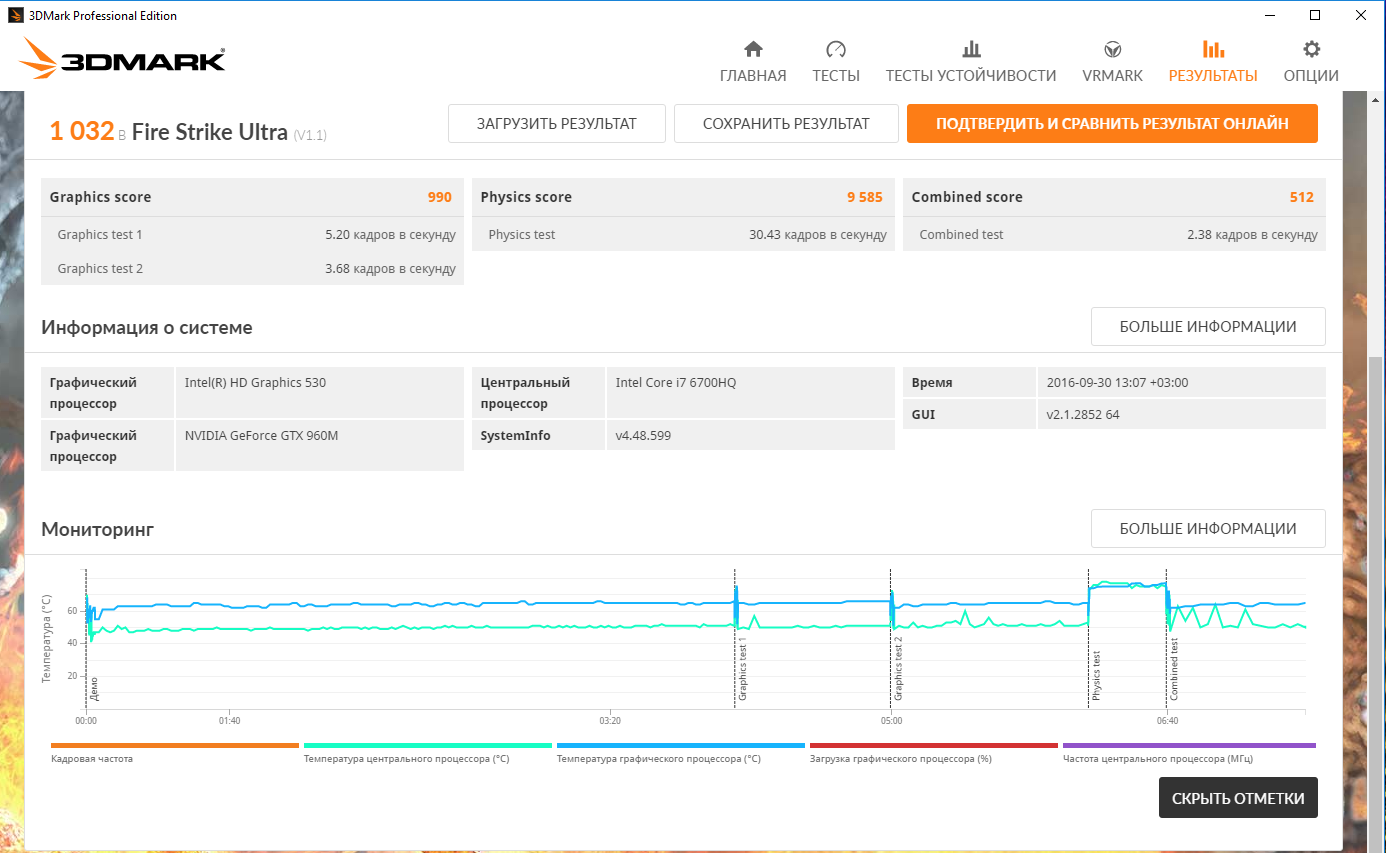


How does the Y700 behave in games? We managed to play only a few: World of Tanks, Dying Light, Fallout 4, World of Warships and Sleeping Dogs. The device proved to be worthy: the performance does not fall, the heating of a key component - the video card did not exceed 70 degrees Celsius, and the noise level of the cooling system does not turn into a depressive and annoying howl. WOT and WoWs at maximum settings give about 60 fps in combat, Fallout 4 - 50 fps at medium, ultra at 30 to 50 frames per second, it all depends on the environment.
But something tells us that not everything is so “rosy” everywhere. For example, in Sleeping Dogs we did not manage to get impressive fps figures at maximum graphics settings and had to “roll back” to the average.
In principle, a bunch of GeForce GTX 960M graphics card and Intel Core i7 6700HQ processor are not exclusive and, coupled with a fairly brisk disk subsystem and an impressive amount of RAM, give quite an acceptable result - a “solid four”, so to speak, and in the classmates shelf (by iron) - and all 5 points.
What do you mean by the term "gaming laptop"? Is it just a game? But, thanks to its powerful hardware, such a device can perfectly cope with the encoding / playback of video and audio, work in CAD, and can act as a good home media center, even with its own audio. He does not claim to be the "beast machine", but his iron will be enough for almost any of the tasks listed above and if home is needed not prohibitively expensive gaming PC with the ability to quickly move it not only within the apartment, but also within the city, without strain back, bruises from the system unit on the legs and without calling a taxi for transportation, the Y700 is a good, balanced choice.
UPDATE:
Price? Prices for gaming laptops Lenovo Y series start at 60,000 rubles. Depending on the configuration and screen size.

But there was one difference that, it seems to us, radically distinguishes this civilization from ours - they were deprived of gaming laptops! We do not know why this happened, but their scientists, who were very similar to ours, for some reason could not invent such a device. Either they could not make the video cards mobile, or they could not solve the problem of overheating, we don’t know. So they sit, probably, still on bulky desktops, tied to a power outlet ... At the time, like you and I, friends, we are already using this wonderful invention. Guess what we want to talk about today?
A small lyrical digression. You can’t just start talking about gaming laptops without mentioning about laptops “in general”, as they are, in some way, their “ancestors”.
')
Refer to Wikipedia for information:
- The idea of creating a portable computing machine "the size of a notebook, having a flat monitor and able to connect to networks without wires," was put forward by the head of Xerox research laboratory, Alan Key, in 1968 .
- In 1982 , by request of NASA, William Mogridge (Grid Systems) created the world's first notebook Grid Compass (RAM on a 340 KB CMD , an Intel 8086 processor with a clock frequency of 8 MHz, a fluorescent screen). This laptop was used in the program Space Shuttle .
- The first common-model Osborne 1 (weight 11 kg, 64 Kb RAM , 4 MHz Zilog Z80A processor, two 5.25- inch drives , three ports, including a modem connection, a 8.75 × 6.6 monochrome display cm, containing 24 lines of 52 characters; 69 keys) was created by inventor Adam Osborne in 1981 and launched on the market for $ 1,795. Due to a marketing error, which was that the start of sales of the subsequent Osborne Vixen model was announced long before the machines went on sale (and this hit the Osborne 1 sales), the company went bankrupt.
- In 1990 , Intel introduced the first specialized mobile processor , the Intel386SL , and also proposed a power-down technology that extends battery life .
Yes, a glorious way half a century long. As for the "gaming" laptops, their historical path is not so long. But the future, whatever one may say, is still behind mobile devices that give the user freedom of action and movement and do not require wired connections. And, of course, on the front of gaming devices, this principle is just as important! Today we just want to consider one of the representatives of the line of gaming laptops - we got the Lenovo IdeaPad Y700 and want to “touch” it.

Yes, this is not the top model in the line of Lenovo gaming laptops, let's say - from the whole model range it is more accessible, but if you are interested in more abruptly, then you can get acquainted with the entire line by the link .
Let's start with a visual inspection. The device is delivered in a cardboard box, nothing remarkable, standard packaging made of good cardboard. Inside we are met by black color: foam rubber, accessories packaging, cellophane - all are strictly black. The laptop itself, to be honest, is not small. Dimensions “my honor”: 42x30x27.9 cm and weight 3.5 kg. To call such a device a mobile device with a stretch, but when you understand what the "beast is hiding under the hood," all these reservations recede into the background. And still contributes to such dimensions 17-inch Full HD display, with a matrix made by technology IPS with anti-reflective coating. The solid size allowed to install solid iron! But we will not run ahead, first consider the laptop from all sides and get acquainted with the input-output ports and interesting engineering "discoveries".
A closed laptop on the back looks like the hood of an expensive caddy. It seems that now Bi-Xenon headlights will flash, a roar of a diesel turbo engine will be heard from under the grille and you will rush along the highway towards the night!


What, unfortunately, can not be said about the front view. The usual front view, no more.
The body (aka topcase) of the device is cold, dull, but not metal. Fingerprints remain, if this is important to you, but it is well erased, which will somehow sweeten the pill.
But the bottom panel is metal, not plastic, as it may seem during a quick inspection, despite the fact that the design on it is exactly the same as on the top. On it (the panel) there is an air intake window, with a grille and dust filter inside, as well as a 3W subwoofer in the center.

Now about the area and the use of storage space. The main thing - her, this area a lot. For example, the keyboard climbed with a number pad and full-sized arrow keys. But all the same, when you open the laptop, at first you lose a little. In the upper corners, right and left, there are 2-watt JBL speakers supporting Dolby Home Theater technology. Here, of course, the collaboration between Lenovo and JBL has borne fruit - the sound of the Y700 is quite pleasant. A bit lacking bass, but this is a laptop, not a studio audio system!

On the left side of the notebook are: proprietary power port, USB 2.0, SD / MMC card reader, 3.5 audio jack, Lenovo Recovery hole.

On the right: Kensington lock, RJ-45 network port, HDMI, two USB 3.0 ports

It is time to turn on the ignition and look at the specifications. Our specimen has the following performance characteristics:
| CPU | Quad-core Intel Core i7 6700HQ (Skylake) |
| OS | Windows 10 Home |
| Video Cards | NVIDIA GTX 960M 4 GB GDDR5 and Intel HD Graphics 530 |
| Memory | DDR4 16 GB |
| Drives | SSD 120 GB + HDD 1TB |
| Audio | Two 2W JBL speakers and a 3W subwoofer with surround sound and support for Dolby Home Theater technology |
| Battery | 4 cells 60 W · h |
| Display | Frameless, Full HD (1920 x 1080) with support for IPS technology and anti-reflective coating |
| WLAN network | LAN 1000 Mbit, support Wi-Fi 2 x 2 a / c and Bluetooth 4 |
| Ports | Two USB 3.0 ports, one USB 2.0 port (permanently on), DC-in connector, 2-in-1 combo audio jack, one HDMI connector, 4-in-1 card reader (SD, SDHC, SDXC, MMC) |
Pro performance better words tell brothers tests. To begin with a couple of pictures with the characteristics of the hardware of the laptop.


The performance of the disk subsystem was estimated using the popular package CrystalDiskMark. Recall that the disk here is 2: agile SSD at 120 Gb and spacious, with a capacity of 1 Tb, the traditional HDD.

The speed of packing / unpacking the archive in 7-zip.

With the ComputeMark benchmark, let's take a look at the overall GPU computing performance. This test is based on the automatic execution of several computational scripts that run through the API DirectX 11 Compute.

To study the performance of the construction of three-dimensional models, design and animation, we use the specially designed for this purpose test CINEBENCH.

To conduct stress testing of the video card and test the computer cooling system at maximum heat output, we use the Heaven benchmark with the Basic and Extreme settings.


Well, where do without 3DMark :)




How does the Y700 behave in games? We managed to play only a few: World of Tanks, Dying Light, Fallout 4, World of Warships and Sleeping Dogs. The device proved to be worthy: the performance does not fall, the heating of a key component - the video card did not exceed 70 degrees Celsius, and the noise level of the cooling system does not turn into a depressive and annoying howl. WOT and WoWs at maximum settings give about 60 fps in combat, Fallout 4 - 50 fps at medium, ultra at 30 to 50 frames per second, it all depends on the environment.
But something tells us that not everything is so “rosy” everywhere. For example, in Sleeping Dogs we did not manage to get impressive fps figures at maximum graphics settings and had to “roll back” to the average.
In principle, a bunch of GeForce GTX 960M graphics card and Intel Core i7 6700HQ processor are not exclusive and, coupled with a fairly brisk disk subsystem and an impressive amount of RAM, give quite an acceptable result - a “solid four”, so to speak, and in the classmates shelf (by iron) - and all 5 points.
Dry residue
What do you mean by the term "gaming laptop"? Is it just a game? But, thanks to its powerful hardware, such a device can perfectly cope with the encoding / playback of video and audio, work in CAD, and can act as a good home media center, even with its own audio. He does not claim to be the "beast machine", but his iron will be enough for almost any of the tasks listed above and if home is needed not prohibitively expensive gaming PC with the ability to quickly move it not only within the apartment, but also within the city, without strain back, bruises from the system unit on the legs and without calling a taxi for transportation, the Y700 is a good, balanced choice.
UPDATE:
Price? Prices for gaming laptops Lenovo Y series start at 60,000 rubles. Depending on the configuration and screen size.
Source: https://habr.com/ru/post/398303/
All Articles